

![]()
![]()
This Page:
Mary MacMonnies-Low
Mary L. Macomber
Alice Randall Marsh
Clara T. McChesney
Evelyn McCormick
Jane Roma McElroy
Mary Louise McLaughlin
Mary W. Means
Anna Lea Merritt
![]()
![]()
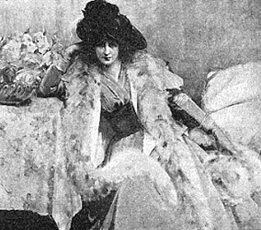
Self-Portrait 1901--
representative work
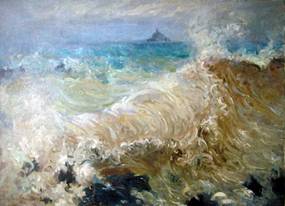
Mont Saint Michel, France--
representative work.

Blossoming Time in Normandy 1901--
representative work
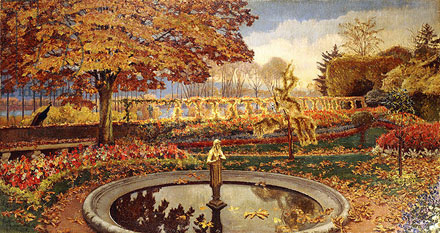
Gardening in Giverny--
representative work.
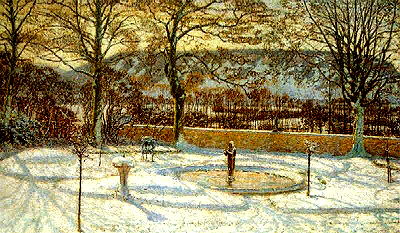
Winter Scene: Le Jardin de Le Moutier. Un coin du parc
par temps de neige.--representative work.
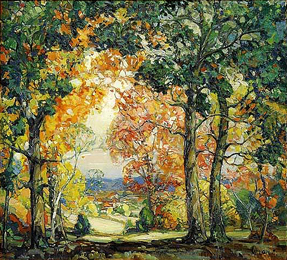
View through the Trees--
representative work.

Two Women Chatting in
a Garden with a Mill--
representative work.

Roses and Lilies 1901--representative work
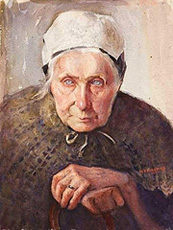
Blind Woman--
representative work.

Portrait of Sara Tyson Hallowell--
representative work.
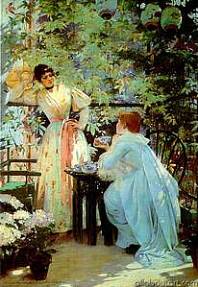
Between Neighbors 1891 (also known
as Tea al Fresco
or Five O'Clock Tea;
MacMonnies-Low taking a tea break
with wife of fellow artist)--exhibited
in Fine Arts Palace, 1893 Exposition.

Girl Playing Harpsichord--
representative work.
June Morning 1888 (image unavailable)--exhibited in the
Fine Arts Palace, 1893 Exposition.
(Stooping young woman
plucks flower from French
kitchen-garden of poppies and vegetables;
light blue haze in air; nearby, a nursemaid holds an infant.)
Primitive Woman 1893
(image unavailable)--go to
Mural Page.
Mural in Women's Building, 1893 Exposition.
A descendant of the Puritan Governor William Bradford, Mary MacMonnies-Low was born in Connecticut and studied art at the St. Louis School of Fine Arts and at the Académie Julian in Paris. She married sculptor Frederick MacMonnies whom she met while studying in France. They lived in France in the 1890s, summering at Giverny near the famous impressionist Monet. However, her mural for the 1893 World Fair was composed in the primitive-heroic academic style. Both MacMonnies were highly recognized for their work at the Fair. Later divorced, she married mural painter Will H. Low and moved to New York, dropping the "MacMonnies" name from all her work.
![]()
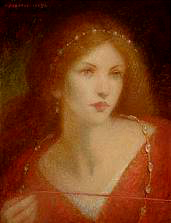
Rosamund the Fair, or Fate
Spinning the Thread of Time 1915--
representative work
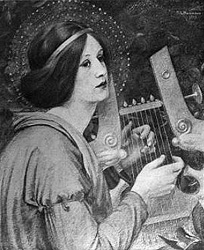
Instrument of Many Strings--
representative work.
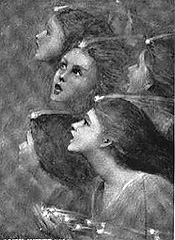
The Singing Stars--
representative work.
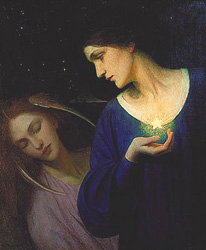
Night and her Daughter Sleep
--representative work.
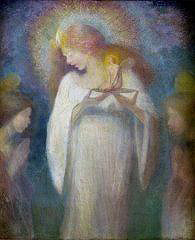
[Title unknown]
--representative work.
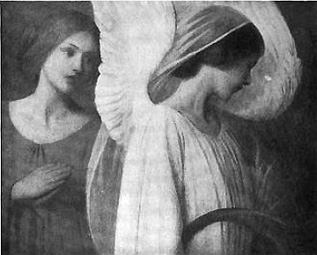
Death--
representative work
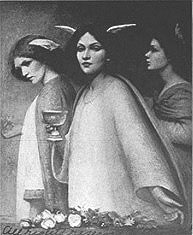
The Daughters of Time--
representative work.

Memory--
representative work.
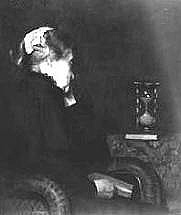
My Mother (The Hour-Glass)
[Museum of Fine Arts, Boston]
--representative work.
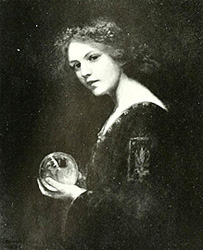
Life--
representative work.
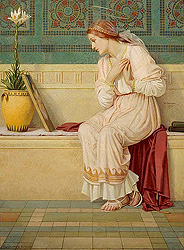
Saint Catherine 1896
[Museum of Fine Arts, Boston]
--representative work.
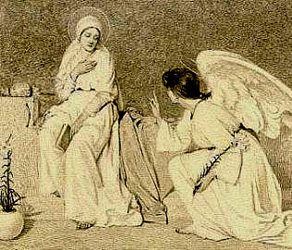
The Annunciation c. 1892
(White clothing, dappled bluish green background.)
--exhibited in Fine Arts Palace,
1893 Exposition.
Love Awakening Memory 1892 (image unavailable)
(Two white-robed figures in white marble
cloister, pinkish
background; pensive charm and medieval effects)
--exhibited in Fine Arts Palace, 1893 Exposition.
Mary L. Macomber was born in Fall River, Massachusetts where her initial art studies began with Robert Dunning, followed by studies at the Boston Museum of Fine Arts and with Frank Duveneck. She often exhibited at the National Academy of Design show in New York City and at other major museums and galleries. Her paintings are typically symbolic and allegorical, some with a noticeable Pre-Raphaelite influence. Unfortunately, many of her paintings were lost in a fire in her studio in 1903.
![]()
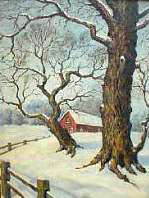
Snow Scene--
representative work

Companions--
exhibited in the Illinois
Building, 1893 Exposition
Shall I Ever Truly Know, Sunny Morning,
and Quiet Meadows
(images unavailable)--
exhibited in the Illinois Building, 1893 Exposition.
Alice Randall Marsh was born in Michegan and studied art at the Art Institute of Chicago where she met her future husband, muralist Frederick Dana Marsh. She helped prepare murals for the 1893 World's Fair, but gained her later reputation for miniature landscapes and portraits. Further art studies were undertaken in Paris under Merson, Raphael Collin, James McNeill Whistler, and Frederick MacMonnies. Returning later to America, the Marshes lived for a time at the art colony in Nutley, New Jersey. Two of their sons, Reginald and James, also became respected artists.
![]()
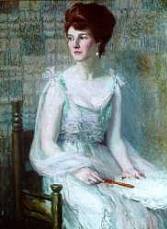
Portrait of a Beautiful Young Woman 1918
(supposedly a portrait of Mrs. Adolphe Wenzell, wife of a former Director
of a Boston Bank, but elsewhere it is titled Portrait of Zillah Thompson)
--representative work

Portrait of a Young Woman--
representative work
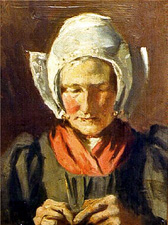
A Dutch Woman Knitting
--representative work
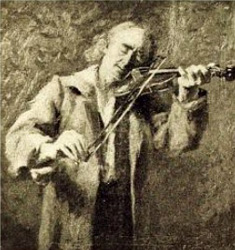
Old Blind Fiddler--
representative work.
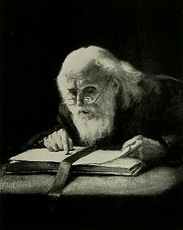
The Discovery
--representative work

Still Life [title unknown]
--representative work.

The Spinner--representative work
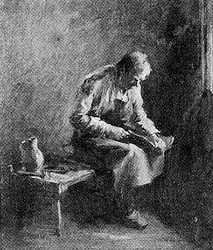
The Cobbler--this image may be
The Old Cobbler exhibited in
the
Fine Arts Palace, 1893 Exposition.
Still Life (image unavailable)--exhibited
in the Fine Arts Palace, 1893 Exposition.
Clara McChesney was born in California where she studied art at the San Francisco Art School, followed by more studies at the Gotham Art School and at the Colarossi School in Paris. She lived the rest of her life in New York and Europe. She won two medals at the 1893 Exposition and exhibited two pieces at the 1894 Midwinter Fair in California. Some of her paintings were in the style of the Dutch school.
![]()

Boats
at Dock--
representative work
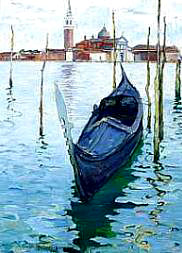
A Gondola
in Venice--
exhibited in the Illinois
Building, 1893 Exposition

Jean de Luz--
representative work

The Customs House, Monterrey
--representative work
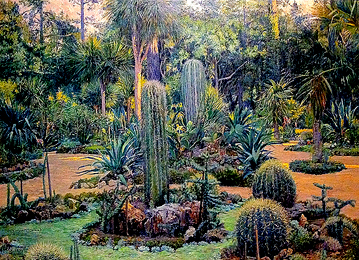
Arizona Gardens, Del Monte, California
[Alternate title: Cactus Garden]
--exhibited in the California Room,
Women's Building, 1893 Exposition.

Garden at Giverny--Is this
Morning at Giverny, France
exhibited in the Fine Arts
Palace, 1893 Exposition?
Afternoon, Old San Luis Rey Mission, Cal.
(image unavailable)--exhibited
in the
Fine Arts Palace, 1893 Exposition.
California-born artist Evelyn McCormick was the child of Irish immigrants who finally settled in San Francisco where her father was a bar-keeper or liquor dealer. Her professional art education began in the early 1880s at the Irving Institute, a girl's private academy, and then at the California School of Design. Having fallen in love with fellow-student Guy Rose, she followed him to Paris where they both studied at the Académie Julian under Jules Joseph Lefebvre and Jean-Joseph Benjamin-Constant. They also spent time in Giverny where she came under the influence of Claude Monet and other French Impressionists. After 1892, the two artists returned to California, and McCormick divided her time between San Francisco and Monterey where she often painted the adobes and mission buildings in that area. She was a frequent exhibitor in California.
![]()

Diamond Head, Hawaii
--representative work
Still Life Study--Music and Tropical Fruits
(images unavailable)
exhibited in the California State Building, 1893 Exposition.
Born in California, Jane Roma McElroy studied art at the San Francisco School of Design and with Emil Carlsen and other artist-teachers. She was known for her fruit, floral, and Chinese genre paintings.
![]()
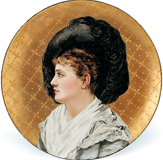
Portrait of Esther
McLaughlin--
representative work

Cherry Trees in Bloom--
representative work

Silver Trees--
representative work
Woodland Scene and Head of a Girl
(images unavailable)--two etchings exhibited
in Women's Building, 1893 Exposition.
Portrait of Henry L. Fry (image unavailable)
--exhibited in the Cincinnati Room,
Women's Building, 1893 Exposition.
Ohio artist Mary Louise McLaughlin studied art at the Cincinnati Art Academy. Although her original goal was evidently portrait painting, she is now known for her ceramics and especially for inventing a technique of underglaze decoration. She wrote several books, including China Painting which is now credited with launching the china painting movement in America.
Porcelain Vase
Rare Losanti Vase
![]()
The Dancers--frieze panel exhibited in the
Reception Room, Women's Building, 1893 Exposition.
Portrait of Mrs. Ellen Mitchel, Portrait of J. W. M.,
A Pearl--A Girl, and Portrait of Miss E. I. (images unavailable)
--exhibited in the Illinois State Building, 1893
Exposition
Mary W. Means was born in Marietta, Ohio and studied art in Paris and Florence, Italy. At some point in the early twentieth century, she lived for a number of years in Santa Barbara, California.
![]()

Self-Portrait --representative work.
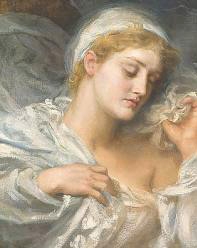
Luna--
representative work

Piping Shepherd--
representative work

The Right Reverend
Talbot 1899--
representative work
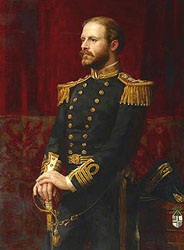
Captain Sir Lambton
Loraine, 11th Battalion--
representative work

Sir Gilbert Scott--
representative work
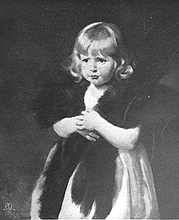
Grandmother's Boa--
representative work
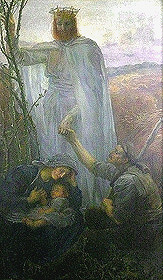
I will give you rest--
representative work

Angel--
representative work
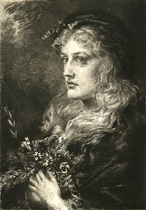
Ophelia 1889 etching
[portrait of Ellen Terry in
the role]--exhibited in
Woman's Building,
1893 Exposition
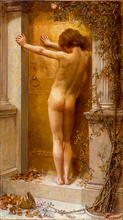
Love Locked Out
1889--[Love barred
by Death's Door]--
exhibited in Fine
Arts Palace,
1893 Exposition.

Eve Overcome with Remorse 1887--
exhibited in Women's Building, 1893 Exposition.
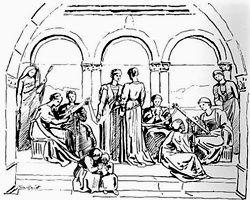
Needlework Sketch of Decoration for
Vestibule in the Woman's Building 1887--
exhibited in Women's
Building, 1893 Exposition.
Portrait of Mrs. Reginald DeKoven (image unavailable)
--exhibited in Fine Arts Palace, 1893 Exposition
Born in Pennsylvania, Anna Lea Merritt was privately educated in a Philadelphia Quaker family. After studying art in Dresden, she married her London teacher (Henry Merritt) in 1871, only to become a widow shortly thereafter. Settling permanently in an English village, Merritt often exhibited at the London Royal Academy and in Philadelphia, and won two medals, plus a diploma, at the 1893 Exposition. Her painting Eve Overcome with Remorse was the first work by a woman ever purchased by the British government. Many of her paintings like War (1883) show a strong Pre-Raphaelite and allegorical influence.
![]()
![]()
Go to U.S. Women Painters, p. 9
Return to Women Painters Index
Return to Site Index
![]()
![]()
Text written by K. L. Nichols
Painting, top of page: Marie Konstantinovna
Bashkirtseff,
In the Studio (1881).
Return to Nichols Home Page
Suggestions/Comments: knichols11@cox.net
Posted: 6-25-02; Updated: 05-01-20